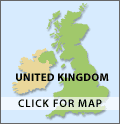INVERNESS & BLACK ISLE U3A
STUDY DAY
Landscape and Population
2011 Census population Scotland: 5,295,000, up 5%from the 2001
2011 Census population of Highland: 232,000, up 11%,from 2001
The population is expected to grow by 18% to 259,768 by 2033.
Highland Population centres: Inverness 57,960
Towns 5 - 10,000: Fort William, Nairn, Thurso, Wick, Alness, Dingwall.
The population increase is mainly the result of high levels of inward migration since 2002 of around 2,000 people annually. Many migrants are retired people from England so the number of retired people will almost double, up 61%, while the percentage of elderly aged 75+ will more than double up, by 117%.
Highland also attracts large numbers of families from Scotland and the rest of the UK. Most were in the 35 to 40 age group.
Highland region continues to attract more EU workers, many from Poland and Latvia, than the rest of Scotland. This has contributed to a rise in the birth rate so that 2009 was the first year that births exceeded deaths since 1996/97.
Workers and their families are moving into the Inverness, Badenoch and Strathspey areas which are the only areas expected to show growth in the number of school children.
The majority of outwith house sales are recorded for Skye or Wester Ross and Badenoch/Strathspey.
Highland generally has an older population profile than that of Scotland with similar proportions of children but higher proportions in all the age groups above 50 years. There has been a consistent loss of young people leaving to attend university, and/or seeking employment elsewhere for many years.
Tourism in the Highlands 2011
Tourism was identified as one of Scotland’s key growth sectors in the Government’s Economic Strategy and is one of the Highlands’ most important industries. It is also a sector that has shown real resilience through the UK economic recession. Latest full year figures (2009) show tourism in Highland is responsible for:
• £688m of direct expenditure.
• £161m of indirect expenditure
• Over 18,000 jobs (including the tourism related self employed)
